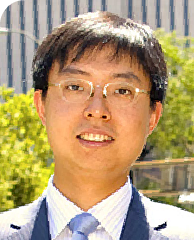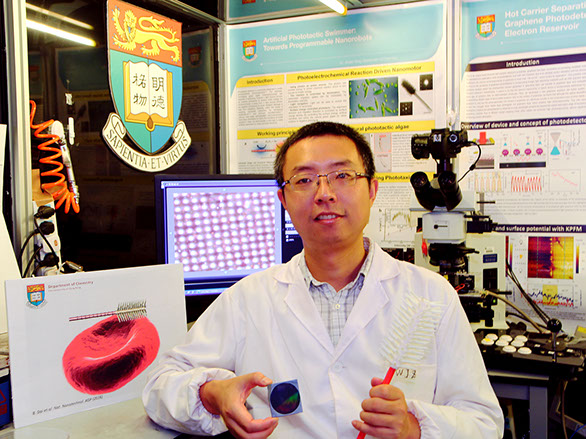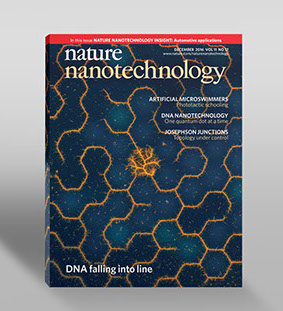This scenario was used as a plot device for the 1966 classic Fantastic Voyage, where a submarine and its crew are shrunken to microscopic size and injected into a scientist’s blood stream to save him, and again in 1987, in Inner Space when a cocky pilot taking part in a miniaturisation experiment is accidentally injected into a hapless store clerk.
Now those unlikely occurrences have moved a step closer to reality, thanks to a team of researchers led by Dr Jinyao Tang of the Department of Chemistry, who have developed the world’s first light-seeking synthetic nanorobot, a device approximately the size of a blood cell. The implication is that surgeons will be able to inject these minuscule robots into patients’ bodies to fight tumours and enable more precise targeting of medications.
The team’s findings have been published in the leading scientific journal Nature Nanotechnology and subsequently reported in the popular magazine Scientific American.
“This technology is hugely important and is going to have a very big impact,” said Dr Tang. “It will be used to treat disease and to monitor health. It has been speculated about in science fiction for a long time and soon it will be a reality. Within the next 10 years we will have the engineering and scientific problems solved and we will be doing chemical trials. We may be testing it on cancer by then.
“People are already using it to treat eye problems – because they are easy to penetrate – and also on cuts on the surface of the skin, which it can heal and leave no scar. But this is just demonstration stuff really – not practical. In 10 years it will be practical, and will be used for biomedical applications, and eventually for removing tumours and precisely targeting medications.”
The development of tiny nanoscale machines for biomedical applications has been a key trend in scientific research in recent years – the 2016 Nobel Prize in Chemistry, for example, was awarded to a team of scientists for ‘the design and synthesis of molecular machines’. This particular fantastic voyage began three years ago, when Dr Tang and his team of fellow chemists and engineers embarked on research to develop and explore a light-guided nanorobot and to demonstrate its feasibility and effectiveness.
It was a big learning curve. They designed everything from scratch, including the laboratory and the novel nanotree structure itself, which looks rather like a bottle brush and is composed of two common, low-priced semiconductor materials: silicon and titanium oxide. During the synthesis, silicon and titanium oxide are shaped into nanowire and then further arranged into a tiny nanotree heterostructure. Inspired by natural green photo algae which seek light, each ‘bristle’ is a light sensor and reacts individually, so if light comes from the side it turns towards it. “We can programme it to turn either towards or away from light,” said Dr Tang. “We use a joystick to control where the light is coming from.”
The team is made up of chemists and two people from Engineering. “The nature of the research is crossdisciplinary,” said Dr Tang. “In fact, rather than chemistry this is really more material science which is a very important area in modern research. At HKU we already have academics from Chemistry, Science and Engineering collaborating on material science projects, and I think it would be good to make this officially an area of discipline in the near future, which means introducing Material Science programmes.”

![]() This technology is hugely important and is going to have a very big impact. It will be used to treat disease and to monitor health.
This technology is hugely important and is going to have a very big impact. It will be used to treat disease and to monitor health.
It has been speculated about in science
fiction for a long time and soon it will be a reality. ![]()
Dr Jinyao Tang
Biocompatibility
“The current nanorobot cannot be used for disease treatment yet,” said Dr Tang, “but we are working on the next generation nanorobotic system which will be more efficient and biocompatible. This model is for UV light which is harmful, so the team now wants to move to visible and infrared light – more biocompatible and less harmful. And it is not only the light which must be biocompatible, so must the media and the chemicals inside the structure.
“We are solving the problems one by one,” he concluded. “Light is an effective option to communicate between the microscopic world and the macroscopic world, so we can conceive that we will be able to send more complicated instructions to nanorobots soon, which will get us one step closer to daily life applications.
%20and%20his%20research%20team%20members_re_e.jpg?crc=4147085293)
From Science Fiction to Science Fact
It sounds like the stuff of science fiction – but a team of HKU scientists and engineers have developed a macroscopic robot that has the potential to be injected into a person to vanquish illness.
Dr Jinyao Tang showing the disc which contains millions of synthetic light-seeking nanorobots.
The findings of the team led by Dr Jinyao Tang have been published in the leading scientific journal Nature Nanotechnology.
Next
Back
Dr Jinyao Tang (third from left) and his research team members.




